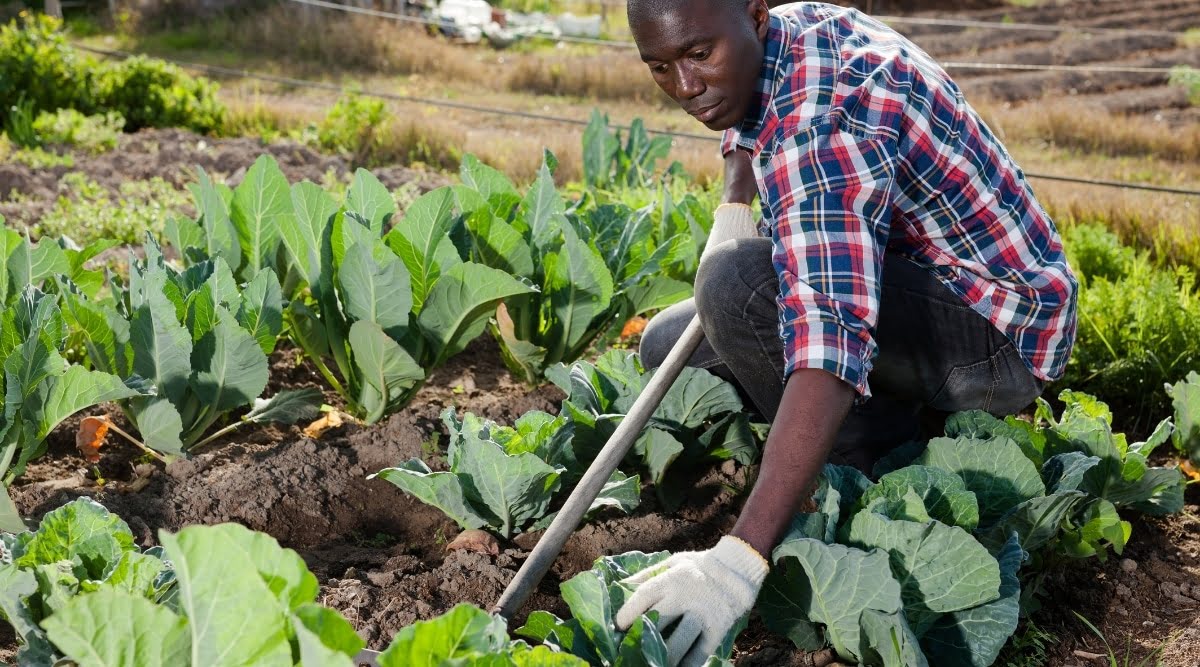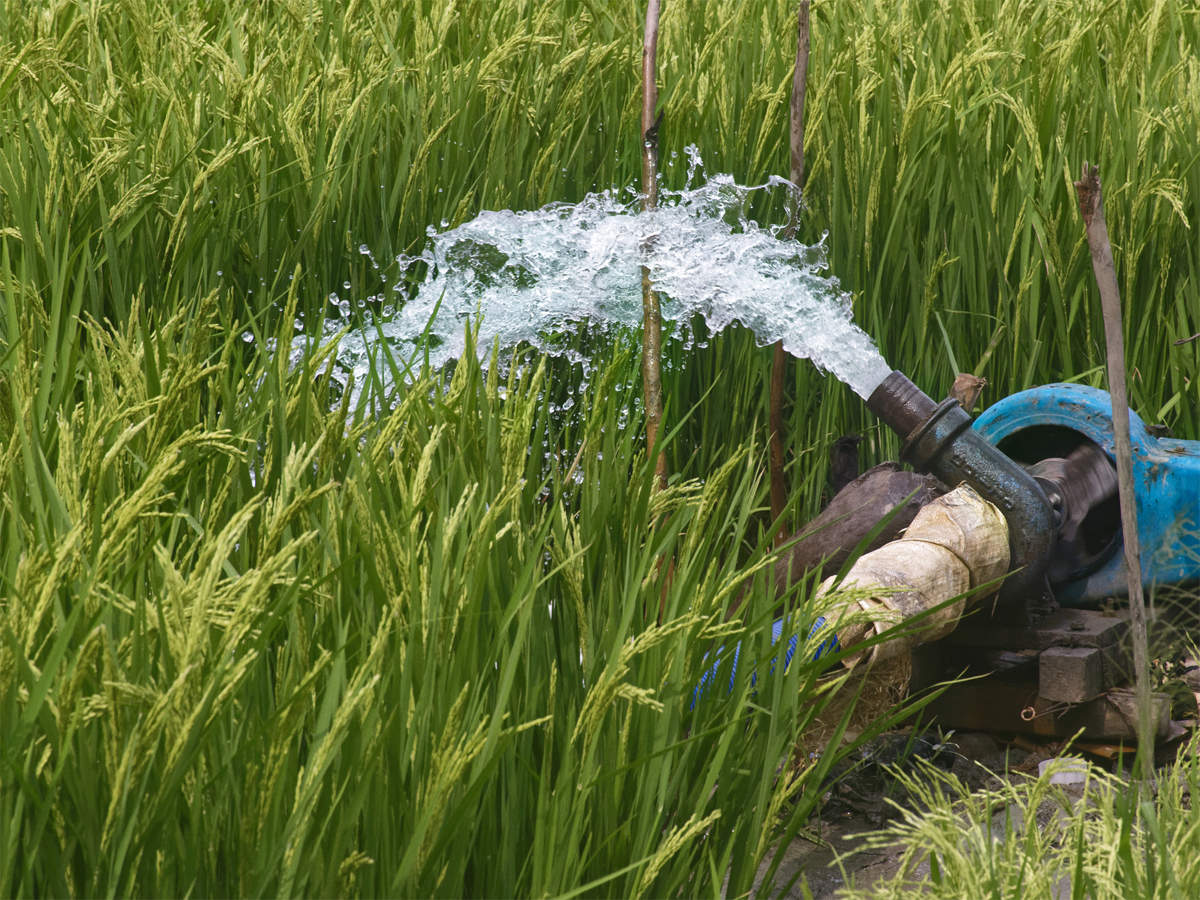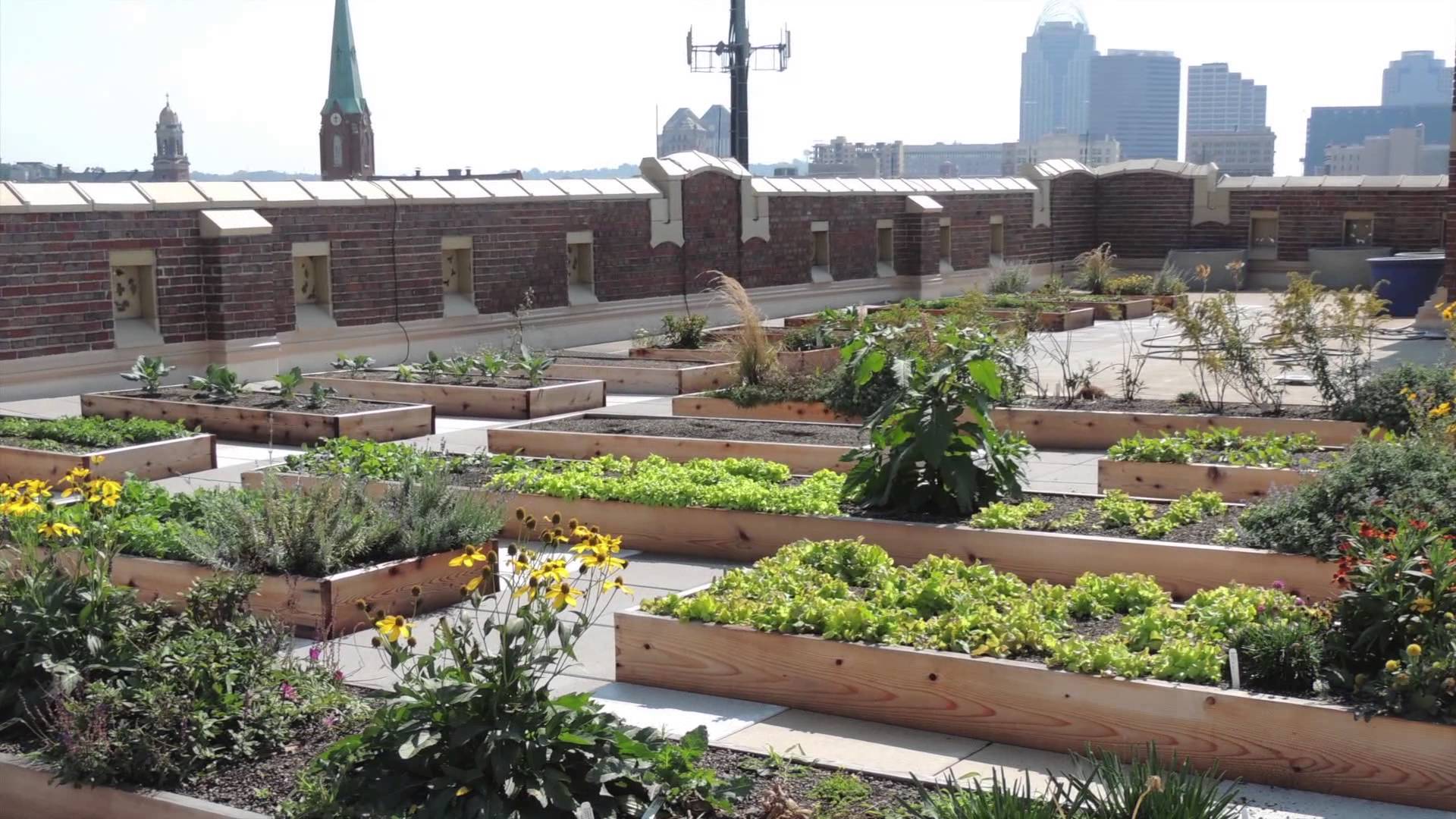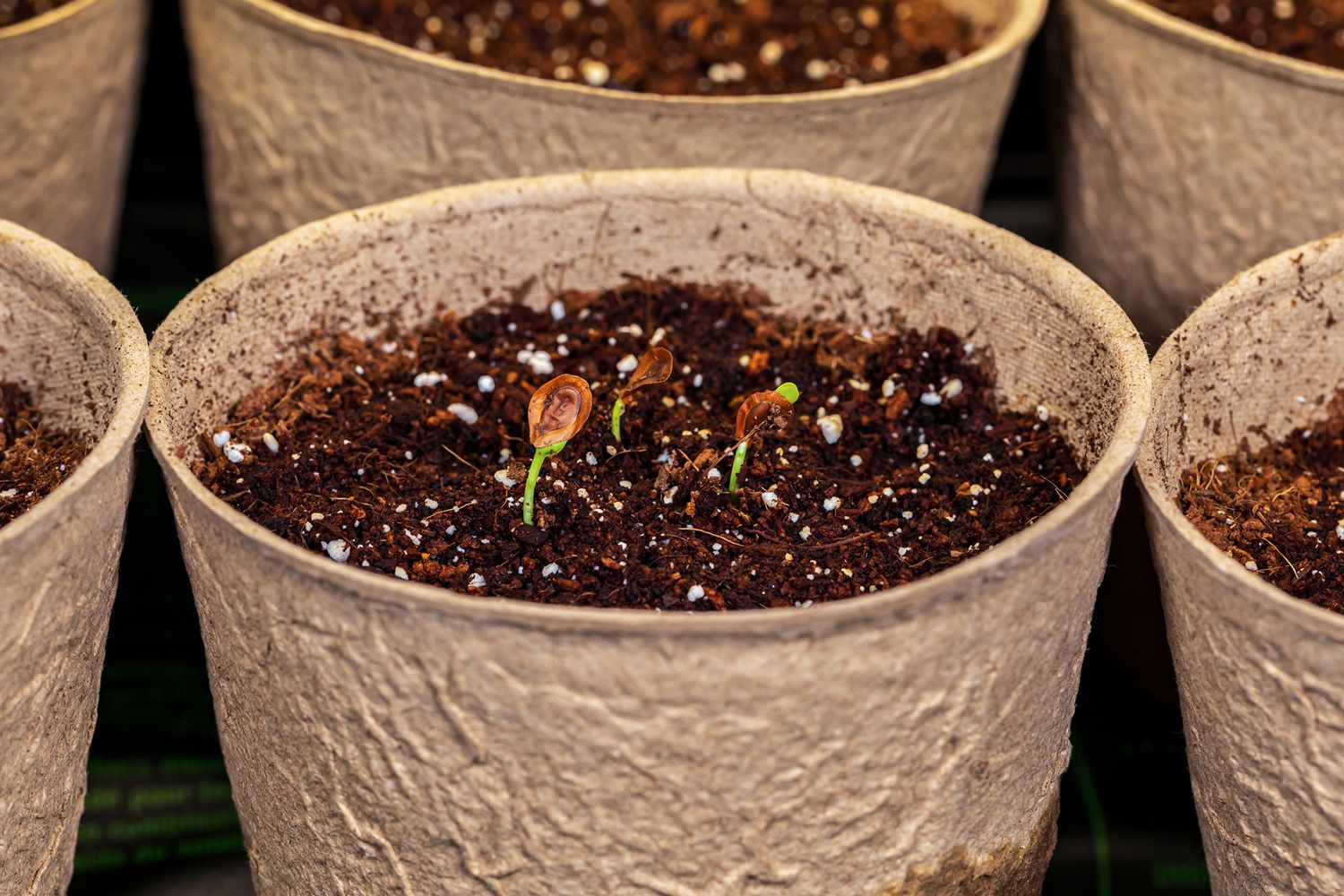Home>Gardening News and Trends>Latest News>When Did Horticulture Begin


Latest News
When Did Horticulture Begin
Published: August 5, 2023
Discover the timeline of horticulture's beginnings and stay updated with the latest news in the field.
(Many of the links in this article redirect to a specific reviewed product. Your purchase of these products through affiliate links helps to generate commission for Chicagolandgardening.com, at no extra cost. Learn more)
Table of Contents
Introduction
Welcome to the fascinating world of horticulture, where humans have been cultivating and nurturing plants for thousands of years. Horticulture, derived from the Latin words hortus meaning “garden” and cultus meaning “cultivation,” encompasses the art, science, and practice of growing and tending to plants for various purposes.
From ancient civilizations to modern times, horticulture has played a significant role in shaping our societies and shaping the landscape around us. Whether it is for sustenance, aesthetics, or environmental preservation, the art of horticulture has evolved and transformed over time.
In this article, we will delve into the origins of horticulture, examine early examples of horticultural practices, explore the impact of horticulture on ancient civilizations, discuss advancements in horticulture techniques, and shed light on the influence of horticulture on modern societies.
Join us on this journey as we uncover the rich history and enduring significance of horticulture. Whether you have a green thumb or simply appreciate the beauty of nature, this exploration of horticulture’s roots will surely captivate and inspire.
The Origins of Horticulture
The origins of horticulture can be traced back to the dawn of human civilization. As early hunter-gatherers transitioned into a more settled lifestyle, they began to explore the art of cultivating plants for their sustenance and survival.
It is believed that horticulture first emerged around 10,000 years ago during the Neolithic period, also known as the New Stone Age. This marked a significant shift in human history, as communities started to practice agriculture and domesticate plants.
One of the key factors that led to the development of horticulture was the discovery of seeds and the realization that they could be sown to grow new plants. Early humans observed the natural process of seed dispersal and began to mimic it, intentionally planting seeds and nurturing the resulting crops.
Another important aspect of the origins of horticulture was the establishment of permanent settlements. As humans transitioned from a nomadic lifestyle to living in fixed locations, they had the opportunity to cultivate plants in more controlled environments. This led to the identification and cultivation of wild plant species that were best suited for human consumption.
The domestication of plants was a gradual process that involved selecting and breeding plants with desirable traits such as larger fruits, higher yields, and improved taste. Over time, humans began to develop rudimentary farming techniques, including irrigation, crop rotation, and the use of tools, to optimize their horticultural practices.
It is important to note that the origins of horticulture were not limited to a specific region. Around the world, in different parts of the globe, ancient communities independently discovered and practiced horticulture. The cultivation of crops like wheat, barley, maize, rice, and potatoes contributed to the development of complex societies and the establishment of early civilizations.
Overall, the origins of horticulture can be seen as a pivotal point in human history. This shift from a nomadic existence to settled farming communities laid the foundation for modern agriculture and paved the way for the cultivation of a wide variety of plants essential for human survival and well-being.
Early Examples of Horticulture
Throughout history, there have been numerous early examples of horticulture that highlight the resourcefulness and ingenuity of ancient civilizations. These early horticultural practices were instrumental in providing food security, promoting trade, and shaping the development of human societies.
One notable example of early horticulture is the ancient Egyptian civilization. The Egyptians cultivated a wide array of plants, including grains like wheat and barley, fruits such as dates and figs, and vegetables like onions and lettuce. Their advanced knowledge of irrigation systems, such as canals and dikes, allowed them to harness the power of the Nile River and transform barren lands into fertile agricultural fields.
In Mesopotamia, the cradle of civilization, the Sumerians developed sophisticated horticultural practices. They were among the first to utilize plows, irrigation channels, and animal husbandry to enhance crop production. The cultivation of crops like barley and wheat not only fed the population but also served as a foundation for trade and economic development.
Ancient China also boasts early examples of horticulture. The Chinese were pioneers in cultivating crops such as rice, soybeans, and tea. Their agricultural practices, including the innovative use of terraced fields and irrigation systems, allowed them to harness the diverse climates and landscapes of their vast territory.
Native American civilizations, such as the Aztecs, Mayans, and Incas, also made significant contributions to horticulture. These advanced civilizations cultivated crops like maize, beans, squash, and potatoes. They implemented ingenious farming techniques, such as chinampas (artificial islands) and terraced agriculture, which maximized arable land and increased crop yields.
Another early example of horticulture is found in the fertile crescent of the Middle East. This region gave rise to the cultivation of crops such as olives, grapes, and pomegranates. The ancient Phoenicians, known for their seafaring skills and trade networks, played a crucial role in spreading horticultural knowledge across the Mediterranean.
These early examples of horticulture highlight the importance of agricultural practices in sustaining ancient civilizations and fostering cultural exchange. The knowledge and techniques developed during this period laid the foundation for future advancements in horticulture, shaping the way we cultivate and interact with plants today.
Horticulture in Ancient Civilizations
Horticulture played a vital role in the development and prosperity of ancient civilizations. The cultivation of plants not only provided sustenance but also served as a foundation for social, economic, and cultural advancement.
Ancient civilizations such as the Babylonians, Greeks, Romans, and Persians embraced horticulture as an essential part of their societies. These civilizations recognized the value of plants not only as a source of food but also for medicinal, ornamental, and religious purposes.
In Babylon, the Hanging Gardens were one of the Seven Wonders of the Ancient World. Built around 600 BCE, these terraced gardens were a marvel of horticultural engineering. The gardens showcased a vast array of plant species, including exotic and imported plants, watered by an intricate irrigation system.
The Greeks and Romans were known for their meticulous gardens and sophisticated horticultural practices. Greek gardens, such as those found in Athens and Delos, were designed to evoke a sense of harmony and beauty. These gardens featured ornamental plants, fountains, and architectural elements. Romans, on the other hand, developed elaborate villa gardens with symmetrical layouts, topiaries, and a wide variety of fruit trees and herbs.
The Persians, with their advanced knowledge of water management, created paradisiacal gardens known as “paradises.” These gardens were meticulously designed with elaborate irrigation systems, reflecting pools, and fragrant flowers. The renowned gardens in the ancient city of Persepolis exemplified the Persians’ ingenuity in combining aesthetics and horticulture.
Religion also played a significant role in horticulture in ancient civilizations. Egyptian culture, for instance, placed great importance on plants and their connection to the afterlife. The cultivation of lotus, papyrus, and palm trees was intricately linked to their religious beliefs and burial practices.
In ancient India, horticulture flourished as part of Ayurveda, the traditional Indian system of medicine. The cultivation and use of medicinal plants, herbs, and spices became an integral part of their healing practices, with ancient texts documenting the vast knowledge of plant properties and their therapeutic applications.
Throughout these ancient civilizations, horticulture served as a symbol of power, wealth, and prestige. The abundance of food from horticultural practices provided stability and allowed for the development of specialized professions, arts, and literature.
The influence of horticulture on ancient civilizations can still be seen today. Many of the techniques and principles developed during this time continue to shape modern horticultural practices, showcasing the enduring legacy of these early societies.
Advancements in Horticulture Techniques
Over the centuries, horticulture has seen significant advancements in techniques that have revolutionized the way plants are cultivated and cared for. These advancements have enabled humans to improve crop yields, enhance plant breeding, and protect plants from diseases and pests.
One significant advancement in horticulture is the development of irrigation systems. Early civilizations, such as the Mesopotamians and Egyptians, employed simple irrigation methods to bring water to their crops. However, over time, irrigation techniques became more sophisticated, utilizing channels, wells, and pumps to efficiently distribute water to fields. Modern irrigation systems, such as drip irrigation and sprinkler systems, allow for precise control of water distribution, minimizing water wastage and maximizing plant health.
Another crucial advancement is the development of plant breeding techniques. Through selective breeding, scientists and horticulturists have been able to create new plant varieties with improved characteristics, such as disease resistance, higher yields, and enhanced taste. Techniques such as cross-pollination, hybridization, and genetic modification have been instrumental in creating new cultivars that meet the needs of farmers and consumers.
The use of fertilizers and soil amendments has also significantly advanced horticulture practices. Ancient civilizations used natural substances such as manure and compost to enrich the soil. However, with the advent of synthetic fertilizers in the early 20th century, farmers gained access to nutrient-rich compounds that could be easily applied to crops. Fertilizers have played a crucial role in boosting crop productivity and ensuring optimal growth by providing essential nutrients in balance.
Advancements in pest and disease management have also revolutionized horticulture practices. Early civilizations relied on manual methods, such as handpicking pests and using natural repellents. However, the development of chemical pesticides in the 20th century provided effective and efficient means to control pests. In recent years, there has been a shift towards more sustainable and integrated pest management approaches, incorporating methods such as biological controls, cultural practices, and organic pest repellents.
Technology has played a significant role in advancing horticulture as well. Greenhouses and indoor growing systems allow for year-round cultivation in controlled environments, providing optimal conditions for plants to thrive. Additionally, advancements in precision agriculture, automation, and remote sensing technologies have enabled farmers and horticulturists to monitor and manage crop health, water usage, and nutrient levels with greater accuracy and efficiency.
Overall, these advancements in horticulture techniques have not only transformed the industry but also contributed to global food security and sustainability. By continuously improving cultivation methods, plant genetics, and pest management, horticulture continues to evolve and adapt, ensuring a reliable supply of nutritious food and contributing to the well-being of our planet.
Influence of Horticulture on Societies
The practice of horticulture has had a profound influence on societies throughout history, shaping cultures, economies, and the physical landscape. The impact of horticulture extends beyond the provision of food and encompasses various social, environmental, and economic aspects of human life.
One significant influence of horticulture on societies is its role in shaping cultural identities. Many ancient civilizations developed distinct horticultural practices and rituals that were deeply ingrained in their traditions and beliefs. The cultivation of specific plants and the use of gardens in religious ceremonies and festivals became an integral part of their cultural heritage. Even today, horticulture continues to hold aesthetic and symbolic significance in many cultures, with gardens and green spaces being treasured as sources of tranquility, beauty, and spiritual connection.
Horticulture has also had a direct impact on the economies of societies. The cultivation and trade of horticultural products have been key drivers of economic growth and development. From crops like coffee and tea to flowers like roses and orchids, horticultural commodities have been highly sought-after in global markets. Horticulture has provided livelihoods for millions of people, particularly in rural areas, through farming, distribution, and value-added activities such as processing and marketing.
Additionally, horticulture plays a crucial role in environmental conservation and sustainability. Gardens, green spaces, and urban farming initiatives contribute to biodiversity conservation, carbon sequestration, and the mitigation of urban heat islands. By promoting the planting of native species and implementing sustainable practices, horticulture helps restore ecosystems and reduce the ecological footprint of human activities. Furthermore, horticultural therapy has been recognized for its positive impact on mental health and well-being, using the healing benefits of nature to improve the quality of life for individuals and communities.
Horticulture has also influenced urban planning and design, creating more livable and sustainable cities. The integration of gardens, parks, and green infrastructure into urban landscapes promotes healthy lifestyles, reduces pollution, and enhances the social fabric of communities. Additionally, rooftop gardens and vertical farming techniques make efficient use of limited urban spaces, enabling the production of fresh food in densely populated areas.
Furthermore, horticulture has played a crucial role in addressing food security challenges. The cultivation of a diverse range of fruits, vegetables, and grains ensures a stable and nutritious food supply for communities. Additionally, community gardens and urban agriculture initiatives empower individuals to take control of their food production, promoting self-sufficiency, and fostering a sense of community.
Overall, the influence of horticulture on societies is multi-faceted and far-reaching. From cultural significance to economic development, environmental conservation to food security, horticulture continues to shape the way we live, connect, and interact with the natural world.
Horticulture in the Modern Era
In the modern era, horticulture has undergone significant transformations and adaptations to meet the evolving needs and challenges of society. Technological advances, changing consumer demands, and environmental concerns have all influenced the way horticulture is practiced and perceived in today’s world.
Technological advancements have revolutionized horticulture in numerous ways. The use of precision agriculture techniques, such as GPS-guided machinery and remote sensing technologies, has enabled farmers and horticulturists to optimize crop management practices. Automated systems for irrigation, fertilization, and climate control in greenhouses have increased efficiency and reduced resource waste. Additionally, genetic engineering and biotechnology have facilitated the development of genetically modified crops with improved traits, such as resistance to pests or tolerance to environmental conditions.
Consumer demands and preferences have also shaped modern horticulture practices. There is a growing demand for organic and locally sourced produce, which has led to the expansion of organic farming and the rise of farmers’ markets and community-supported agriculture. People are increasingly interested in sustainable and eco-friendly practices, and horticulture has responded with initiatives like urban farming, rooftop gardens, and vertical farming, which reduce the carbon footprint associated with food production and transportation.
Climate change and environmental concerns have had a significant impact on horticulture in the modern era. Extreme weather events, water scarcity, and changing growing seasons require horticulturists to develop resilient farming practices. The use of drought-tolerant plants, water-efficient irrigation systems, and soil conservation techniques are becoming more prevalent to adapt to the changing climate. Additionally, horticulture plays a critical role in conservation efforts, with the preservation and restoration of native plant species and habitats becoming a priority.
The integration of technology and horticulture has also resulted in new fields of study and innovation. Agtech, or agricultural technology, has emerged as a rapidly growing industry, providing innovative solutions to improve crop productivity, reduce waste, and promote sustainable farming practices. From vertical farming to hydroponics, from drone-based crop monitoring to advanced plant breeding techniques, horticulture is embracing the possibilities that technology offers and paving the way for a more efficient and sustainable future.
Furthermore, horticulture has expanded beyond traditional agriculture to encompass a broader range of applications. The use of plants for phytoremediation, the process of using plants to clean up pollutants from the environment, is gaining attention as a sustainable solution for environmental remediation. Additionally, therapeutic horticulture programs have gained popularity, utilizing the healing power of plants and gardens to improve mental and physical well-being.
The modern era has brought about a reimagining of horticulture. It is an era of innovation, sustainability, and consumer-driven practices. As we face the challenges of a rapidly changing world, horticulture continues to evolve, adapt, and play a crucial role in nourishing our bodies, preserving the environment, and enhancing our quality of life.
Conclusion
Horticulture has a rich and fascinating history that spans thousands of years. From its origins in ancient civilizations to the modern era, horticulture has played a crucial role in shaping societies, economies, and the environment.
Throughout history, humans have recognized the importance of cultivating plants for food, aesthetic, medicinal, and cultural purposes. The transition from a nomadic lifestyle to settled farming communities marked a significant shift in human society, leading to advancements in horticultural practices such as irrigation, selective breeding, and soil management.
Ancient civilizations like the Egyptians, Greeks, Romans, and Persians embraced horticulture, using their creativity and knowledge to develop sophisticated gardens and advanced agricultural techniques. These civilizations understood the impact of horticulture on their economies, cultures, and wellbeing.
In the modern era, horticulture has undergone remarkable advancements driven by technology, changing consumer preferences, and environmental concerns. Precision agriculture, genetic engineering, organic farming, and sustainable practices have become prominent features of modern horticulture.
Horticulture has transformed urban landscapes with the integration of green spaces, rooftop gardens, and vertical farming, promoting sustainability and improving the quality of life in cities.
Furthermore, horticulture continues to address the challenges posed by climate change and food security. Resilient farming practices, conservation efforts, and the development of innovative agricultural technologies ensure that we can sustainably produce nutritious food for a growing global population.
Through its significant influence on societies, horticulture has provided not only food but also beauty, livelihoods, cultural traditions, and a connection to nature. The continued advancements in horticultural practices and the growing awareness of its environmental and social impact pave the way for a greener and more sustainable future.
As we reflect on the captivating history and enduring significance of horticulture, we gain a deeper appreciation for the intricate relationship between humans and plants. From ancient civilizations to the modern era, horticulture has exemplified our ability to adapt, innovate, and harness the power of nature for our benefit and the betterment of our world.









